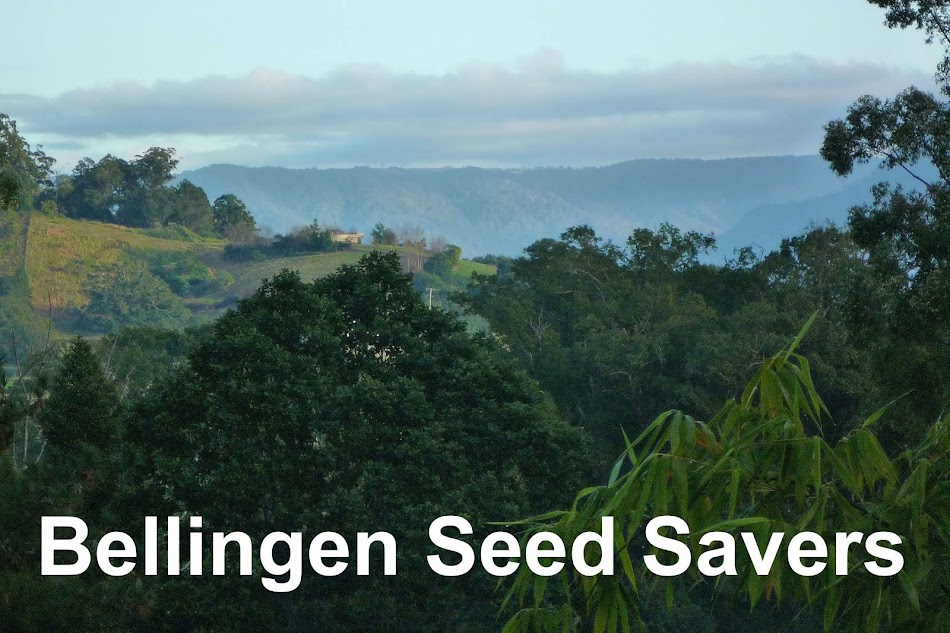Grown from seed, this Jackfruit plant is five years old and has finally carried fruit to maturity.
It is planted in a sunny position, well drained but not irrigated. The temperature did not drop below one or two degrees Celsius in the previous winter.

This mature Grumichama (gold) plant produced fruit in summer. Black fruited Grumichama seems less productive. A young Saba (Malabar) Chestnut is in the foreground.
Eating mulberry leaves
 |
| A White Mulberry growing near Bellingen |
 |
| Coppiced edible-leaf mulberry rows on contour beneath nitrogen-fixing acacias at Las Canadas in Mexico. perennialsolutions.org | |
White Mulberries are easily grown in the Bellinger Valley but did you know that in other countries varieties are coppiced and grown for their edible leaves. They are cooked as a leafy green vegetable. Some varieties are said to taste better than others.
"
Mulberry (Morus alba) White mulberry leaves
are cooked and eaten in at least several areas of Latin America. Cuban
research has led the way to greater exploitation for human consumption.
They are very high in protein, and selected varieties have very good
flavor and texture. Fresh leaf yields can reach an astonishing 53 tons
per hectare. Much is known about coppiced mulberry leaf production as it
is a critical fodder for silkworm production and also widely used as a
fodder for other livestock. Now perhaps it it taking its place as a
human fodder as well.
Link
'Perennial Solutions '
1. Lamb Stuffed Mulberry Leaves (not necessarily White Mulberry leaves)
2. Fried Mulberry Leaves: "They have so many items made from the mulberries, wine (which was sweet
and so good), tea and even fried mulberry leaves. They are delicious,
even the boys ate them."
oursonnylife.com
3. Mulberry Leaf Tea
4. How to Eat Mulberry Leaves in a Salad
Step 1 "Collect young, unopened mulberry leaves in the spring. Once the leaves
mature and open, they are toxic and no longer edible, naturalist Steve
Brill warns in his book "Identifying and Harvesting Edible and Medicinal
Plants in Wild (and Not So Wild) Places."
Step 2 Rinse the leaves in running water to clean them, then boil them for 20 minutes.
Step 4 Toss the leaves with greens and other vegetables of your choice to create a salad.
mb-Stuffed Mulberry Leaves
Lamb-Stuffed Mulberry Leav























